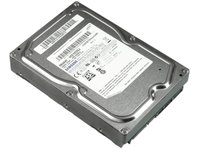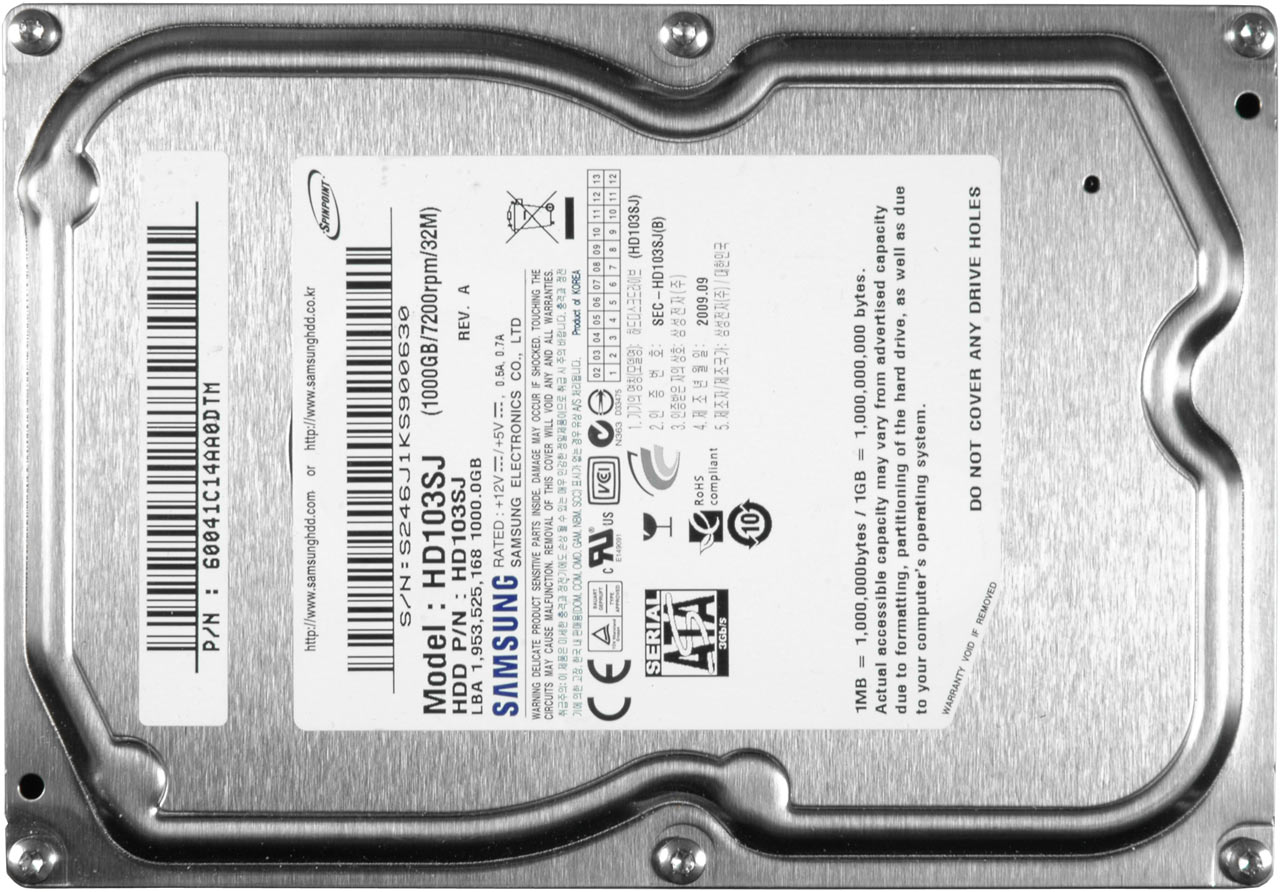Three New Desktop Hard Drives For 2010
Samsung Spinpoint F3 (HD103SJ)
We received two new Spinpoint F3s: the 500GB and 1TB versions. The 2TB flagship, however, is still missing. This is a bit of a bummer because the terabyte drive delivers new throughput records, so we would have expected good things from the larger disk as well. Samsung's HD103SJ is the first desktop hard drive that delivers more than a 150 MB/s maximum transfer rate. It even raises the minimum transfer rate to almost 76 MB/s. To put that into perspective, this is higher sequential throughput result than what we've seen from Western Digital's 10,000 RPM VelociRaptor drive! Writes are equally fast. Streaming read and write performance is almost as quick at over 142 MB/s, leaving the competitors in the dust.
However, the winning streak doesn't last forever. Samsung seems to have optimized the drive for throughput by compromising on a few of its other characteristics. Although the measured access time of 13.6ms is still the quickest result in this review, the Spinpoint F3 1TB is the clear loser in three out of four I/O tests, disqualifying the drive for many business-oriented application environments. As a storage or system drive, the new F3 does well, but this doesn’t means that it's also a fast application drive. According to PCMark Vantage, the HD103SJ isn’t faster than the old 1TB Spinpoint F1 when it comes to loading applications, running Windows Defender, or importing pictures into Windows Photo Gallery. But it is quicker in starting Windows Vista, gaming, and video editing (where the much-accelerated throughput really pays off).
The drive has a few more goodies in stock. The first is its operating range of 0°C to 60°C, allowing it to continue running all the way down to freezing. Other hard drives will typically only run down to 5°C. Only Seagate’s Barracuda XT is ready for more extreme temperatures.
We also like this Samsung drive’s power consumption of 4.9W at idle. Only a VelociRaptor or one of the specialized low-power 3.5” drives have been able to reach lower numbers in our test lab. The maximum power of 7.9W is less spectacular, but still decent. This also applies to power during HD video playback. There was one more surprise waiting with the power consumption at workstation I/O load, though. The new F3 drives seem to be most efficient here, which also probably explains the low I/O performance. We can only guess that Samsung tweaked the drive in favor of throughput and power consumption rather than I/O scores. Be careful which Spinpoint F3 drive you select, as Samsung offers various models between 160GB and 1TB. The 160GB to 320GB drives are available with 8MB or 16MB of cache, while the 750GB and 1TB models come with 32MB of buffer memory.


Get Tom's Hardware's best news and in-depth reviews, straight to your inbox.
Current page: Samsung Spinpoint F3 (HD103SJ)
Prev Page Hitachi Deskstar 7K2000 Next Page Seagate Barracuda XT (ST32000641AS)
